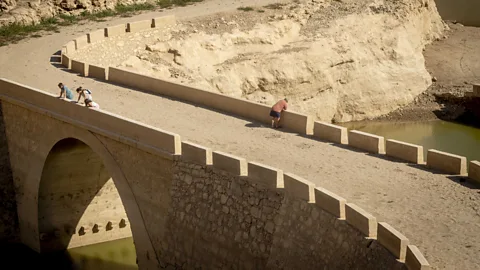 Getty Images
Getty ImagesDespite recent floods, Catalonia remains in the grip of a brutal drought. As climate change makes rainfall more intense and less frequent, authorities are scrambling to ensure safety and drinking water for millions of people.
Barcelona’s Parc de Joan Miró spans four city blocks on the edge of the Eixample district, a dusty square dotted with palm trees, pinkish-reddish vines and a tall, brightly colored column called Dona and Ocell (“woman and bird”), designed by a Catalan artist.
After several years of drought, it is dustier than ever. Shallow fountains were drained and the city even began cutting down wilting palm trees before they could topple over. In Eastern Catalonia for three years 2021-23 had some of the worst droughts in recorded history.
But at certain points in the winter of 2024, a huge cistern 17 meters (58 feet) deep beneath the park will fill with cloudy rainwater. These are the two extremes that the city is in, where there can be too much water and still not enough.
“We are suffering from this great drought and at the same time we are suffering from some of the consequences of extreme rainfall,” says Marc Prohom, head of climatology at the Meteorological Service of Catalonia.
After three years of drought, the Catalan authorities announced a drought emergency at the beginning of 2024, which lasted several months. At the beginning of 2025, low water supplies mean that the city and most of its surroundings were under water drought warning.
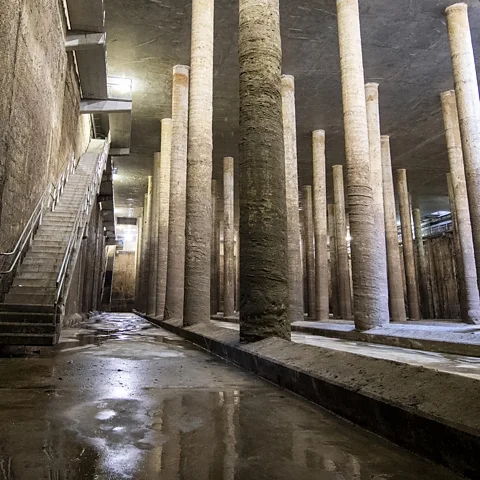 Joan Miro
Joan MiroThe intensity of rainfall in the region is caused by a local weather phenomenon called golpe frío – cold drop – now known by a more accurate term Aislada Depression in Niveles Altosor “Dana,” describing an isolated, high-altitude depression. Warm, moist air rising from the Mediterranean collides with a mass of stagnant cold air at high altitudes, causing huge volumes of rain to fall suddenly.
Rising sea temperatures mean that the frequency and intensity of these storms is an increase is expected. The floods that hit Valencia at the end of October claimed over 200 lives, were caused by the Dan event which brought a year’s worth of rain in a matter of hours. And these events are getting worse.
“The amount of precipitation that can be associated with these kinds of extreme episodes has increased,” says Prohom. “We are facing a new challenge, climate change seems to be acting faster than we expected.”
When it falls, the water too often does not have a chance to sink into the soil. Flat and fertile floodplains create attractive land for urban development and agriculture. Urban sprawl expands hard surfaces such as concrete and asphalt, preventing water from seeping into the ground. Storm drains, culverts, and levees built to correct local flood risk simply move the problem downstream—in greater intensity. Also, changes in agricultural land can affect the soil’s ability to hold water.
“Many flood control measures are not solutions, but factors that exacerbate damage by increasing the speed and height of floodwaters,” says Julia Martínez, executive director of the Foundation for a New Culture of Water, an independent research organization. based in Barcelona.
What’s more, he says, the protection prevents small, more frequent floods, encourages more development in floodplains, and increases the amount of damage that occurs when the protection is breached.
Infrastructure in flood zones is built according to “return periods” that describe the maximum expected flood every 10, 100 or 500 years. But Martínez says those design parameters have failed to keep pace with a warming climate. “What we have now is a new climate. There is no infrastructure that can provide any security for future events, the scale of which we cannot know.”
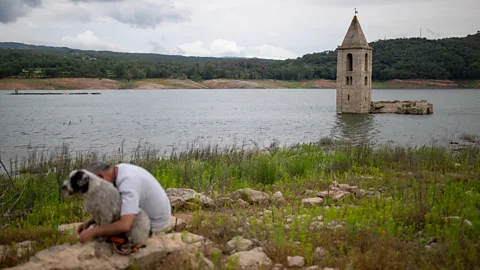 Getty Images
Getty ImagesEven all this rain has not alleviated the current drought crisis. Dana events usually take place close to the coast, while most of Barcelona’s drinking water is generated by streams originating far to the north at the foot of the Pyrenees. “Most of these large floods occur in areas where this water cannot accumulate,” says Martínez. “They are often found in areas unsuitable for dams, so we can have water shortages and flooding problems at the same time.”
The cistern under the Parc de Joan Miró is one of 13 such caves hidden beneath the streets of Barcelona. However, the rainwater collected here is not a drought mitigation measure, but part of a system to prevent rainwater from flooding the city’s sewers. Once the rains subside, the water is released into the sewers and flows into the sea.
Water – its presence or absence – is written into the geography of Barcelona. La Rambla, the famous promenade extending from the port, is of Arabic origin ramladescribing a sandy riverbed that once marked the edge of a walled city. Beyond is the low plain of El Raval, whose long-gone factories were once fed by streams running down nearby Montjuïc. Stroll down Carrer de la Riereta (Stream Street) which runs through the center of El Raval and you will rise up the invisible bank to Poble Sec (Dry Town).
“Barcelona boasts a much lower per capita water consumption than comparable cities,” says Fernando Cabello, director of water cycle services for the city’s authority, AMB. “However, population growth and climate change are expected to mean that water scarcity will continue to be a challenge.”
Currently, a significant portion of Barcelona’s potential water budget is used only to maintain the health of existing sources. Treated wastewater is piped upstream to maintain the flow of the Llobregat River, and treated wastewater is injected into the ground to prevent the Mediterranean from seeping into the city’s groundwater.
Following drought emergency in 2008Barcelona decided to better secure its water supply. The most notable of the events that followed was Llobregat desalination plantthe largest in Europe. In 2021 she added 3% of drinking water in Barcelona. As the last drought took effect, one-third of Barcelona’s water came from a desalination plant, and another 25% of its drinking water came from reclaimed water captured from the sewage system, according to Cabello.
The Catalan Water Agency plans to invest €2.4 billion ($2.5 billion / £2 billion) by 2027 to adapt to water scarcity and drought, including plans to build three more desalination plants in the region. “Work is underway to ensure that 100% of drinking water can come from non-conventional sources when needed, making the supply independent of the rainfall regime,” says Cabello.
In addition to increasing the supply, the city is making special efforts to minimize waste. Tea introduction of progressive tariffs it incentivizes households to use less water, forcing the most wasteful users (usually households in wealthier neighborhoods with gardens and pools) to pay a premium. The city also has a secondary water network which supplies non-potable water – usually reclaimed – for street cleaning, firefighting and park maintenance. Laws are being prepared this would require new housing and major renovations to install gray water systems that collect waste water from showers and drains.
This wastewater is one of the great hopes for the future supply of Barcelona. Waste water treatment plants in Catalonia discharge large quantities of water into the sea – water that could otherwise be further treated and reused. Catalan authorities plan to build 25 water reclamation stations across the region to close the water cycle.
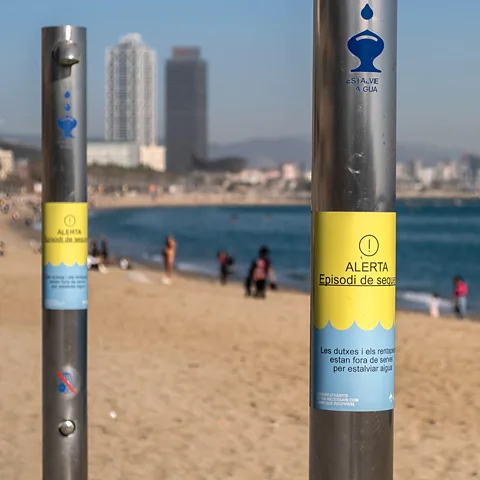 Getty Images
Getty ImagesDealing with the challenge of too much water is more difficult. “We are facing a situation where precipitation shows a decreasing trend (in the region), but the most significant shift that we observe is that precipitation is more concentrated in a smaller number of events and these events are more intense,” says María José Polo Gómez, professor of hydraulic engineering at University of Cordoba, Spain.
He says similar events like those in Valencia will continue to happen in the future as long as human settlements encroach on floodplains. “We have protective measures in many rivers. But when an extreme event like this happens, there’s no damage that can protect you completely.”
Authorities in Spain and beyond are increasingly looking for nature-based solutions that work with the natural water cycle rather than trying to resist it. These include increasing the permeability of urbanized areas to absorb surface water in countries from New Zealand to the United Kingdom. This “mushroom city” concept was enacted at Manchester’s Gorton Parkwhere features such as drains, rain gardens, permeable paving and tree pits help capture and reuse surface water that would otherwise overwhelm drainage systems. (Read more about mushroom cities.)
In Italy’s Cinque Terre region, volunteers are repairing dry stone walls, helping to revive sustainable terraced agriculture that also works to slow water flows from steep mountains. “Nature-based solutions will become central to how we think about how to face the challenges of extreme weather and climate change,” says the project’s junior project manager Francesco Marchese.
However, the only guaranteed way to prevent the death and destruction associated with flooding would be to move away from floodplains. Martínez argues that houses and buildings destroyed by recent floods should not be rebuilt and instead public funds should be used to relocate families to safer areas.
Despite the danger, however, municipalities continue to lobby for flood maps to be redrawn to allow new construction in high-risk areas. “There are millions of euros worth of private benefits in urban projects, so there is a lot of pressure to build everywhere,” says Martínez.
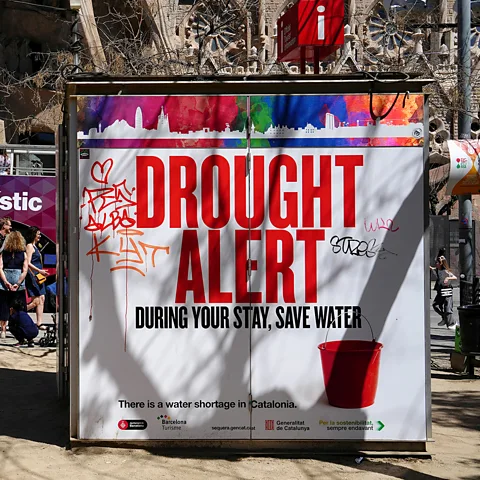 Getty Images
Getty ImagesValencia officials were criticized for not issuing a warning to the local population despite the forecast of intense rains. Of the more than 500 Catalan municipalities that must have a flood emergency plan, less than halfaccording to the Catalan News Agency, either because the plan is outdated or was never drawn up. Government funding to improve flood plans has been announced following the autumn floods of 2024. Polo says it is vital that people living in flood zones are educated about the risks so they know what to do in an emergency.
Faced with a changing climate, Catalonia will have to consider the long-term viability of both urban and agricultural development. “In the past we’ve had floods and we’ve had droughts, but these events are more frequent and more intense,” says Prohom. “I think we have to change a lot of things in the way we work.”
Polo agrees: “We now have to rethink this model because it is very likely that it will not be sustainable in the future.” Yet he still has hope. “We have been able to produce knowledge and knowledge-based solutions. I am a scientist and I believe in our ability to meet these challenges.”
For more science, technology, environment and health stories from the BBC, follow us Facebook, X and Instagram.

